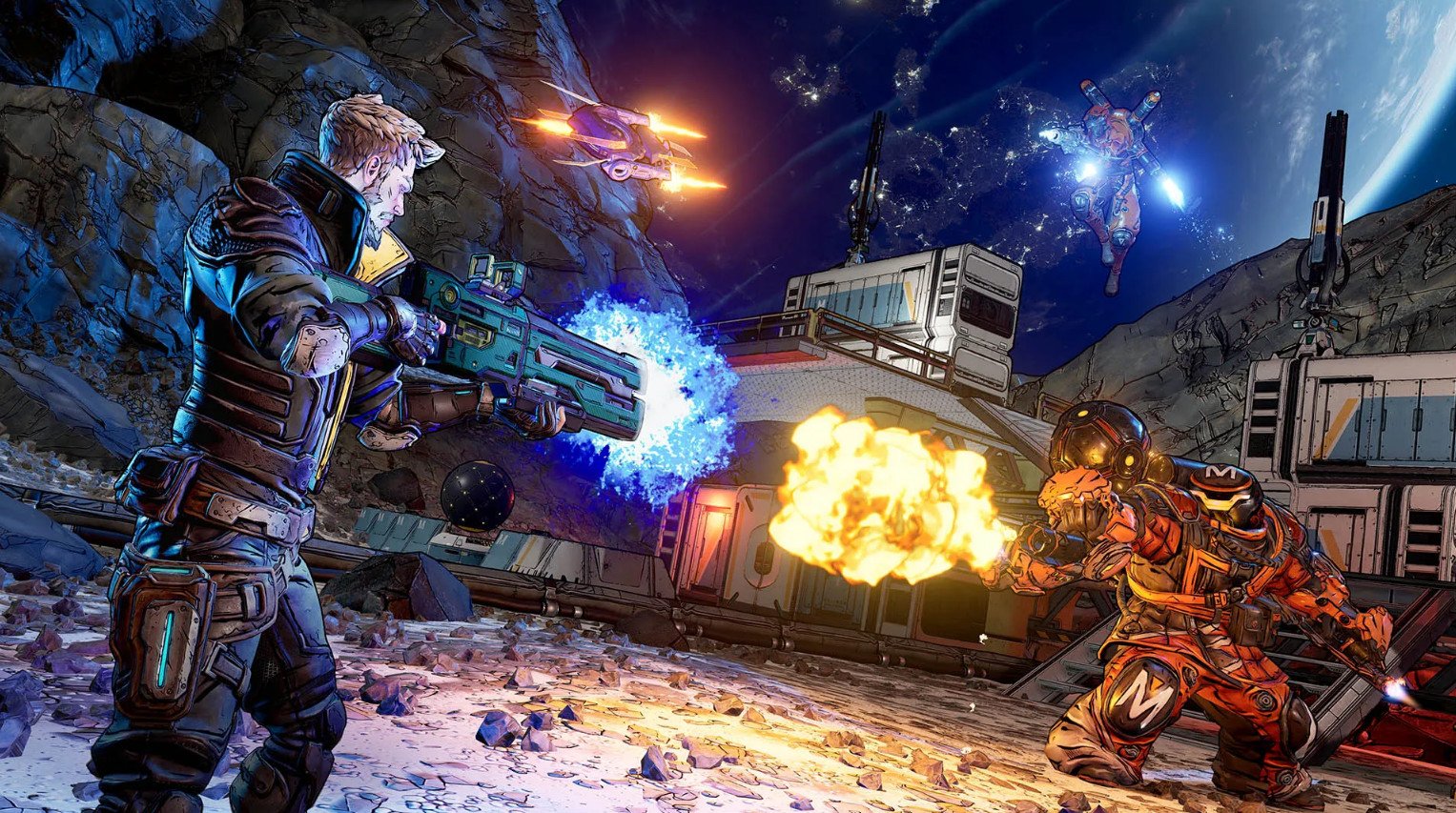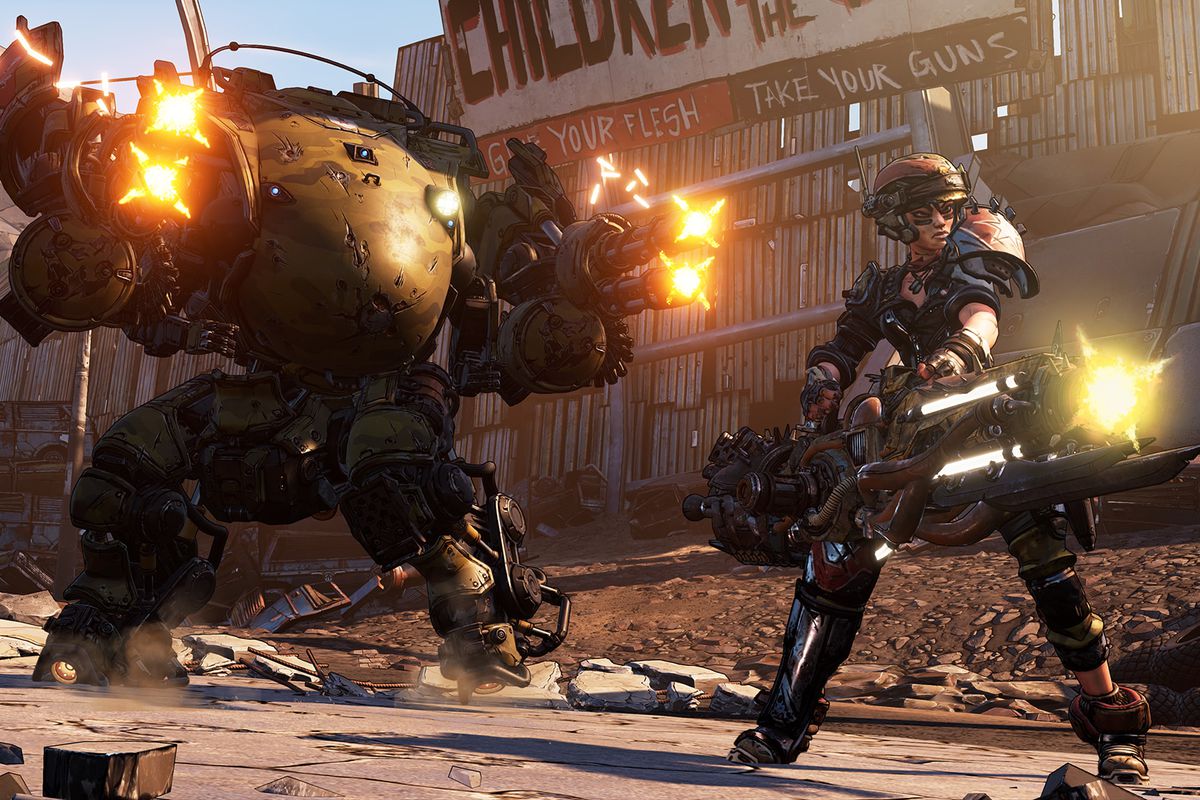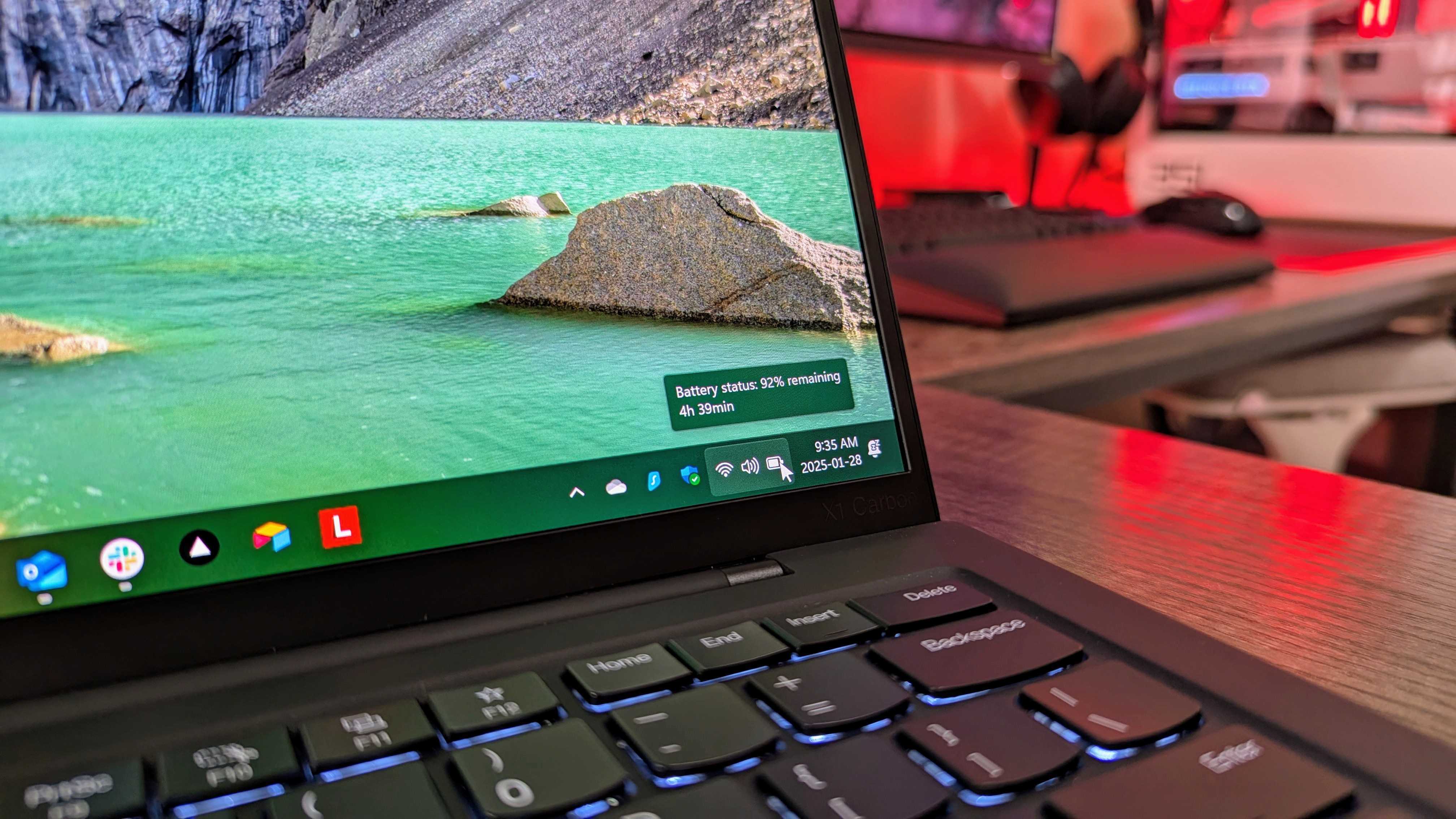All you need to know about elemental damage types in Borderlands 3
Leverage the power of elemental damage against all your foes.

One of the core mechanics of the gameplay of Borderlands 3 is elemental damage. These special damage types can be leveraged through a variety of means — you'll most frequently be using it by shooting elementally-charged weaponry, but there are also skills and explosive barrels in the environment that can cause elemental damage as well. Since each different elemental damage type impacts combat in a unique manner, understanding how to make use of each one in combat will make you a much deadlier Vault Hunter. Here's our guide to everything you need to know about the different forms of elemental damage in Borderlands 3.

The legendary franchise returns
Borderlands 3 offers a gargantuan array of different weapons to find, tons of new enemies to battle, new Vault Hunters to control, and new worlds to explore. Are you ready for mayhem?
Mastering the elements
As previously stated, the different elemental damage types influence combat in unique ways. Here's what each damage type does, as well as some advice on how to use each one efficiently:
- Incendiary: Also known simply as "fire damage," incendiary damage is the most effective damage type in the game against flesh enemies, or enemies with red health bars. It inherently does more damage against flesh, and it also has a high chance to inflict a burning status effect that does high damage-over-time to flesh targets. However, incendiary damage is very weak against both shielding and armor health. Due to this downside, it's best to save incendiary weapons for when you've removed reduced a foe's shielding or armor. Be aware, though, that some armored foes' health bar is entirely armor, which means that incendiary will always be a bad choice against them. Since they almost never have shielding or armor, incendiary weapons are a fantastic choice for dealing with hostile wildlife.
- Shock: Shock damage is the dedicated "shield-stripping" damage type in Borderlands 3, as it does significantly more damage against enemy shields (blue health bars) than it does to any other health type. In addition, it also has a chance to apply an electrical status effect to foes, which does low damage-over-time and briefly stuns them, making them easier to shoot. However, it's weaker against flesh and armor, so it's best to use shock weapons against heavily-shielded enemies that would otherwise require a significant amount of regular fire to take down. The stun utility is nice, but there are other damage types that do it better.
- Corrosive: Sometimes called "acid damage," corrosive damage is the best element for destroying armored bad guys, or foes with yellow health bars. Corrosive damage ignores the damage reduction penalty that all other damage types get against armor, and it can inflict a severe damage-over-time effect that continues to burn through armor health long after you actually shot your weapon, too. Corrosive damage is weak against flesh, however, and it's especially poor up against shielding. For this reason, you'll want to use corrosive damage only when faced with armored enemies.
- Cryo: Also known as "freeze damage," cryo damage is less of a damage-focused element and more of a utility one. The main reason you'll want to use cryo damage is that it can slow down foes on hit, and it can even freeze them solid if you hit them enough times. This prevents the enemy from firing back or moving for several seconds, making them a sitting duck, and if you hit their frozen form with a melee attack, it will do triple the normal damage. This means that cryo damage is fantastic for crowd control, and it works phenomenally with melee-focused builds and/or weapons that have bayonets that also increase melee damage. They also do a bit more damage to armor than other damage types, but it's not even close to being as effective as corrosive damage is. You'll also generally want to avoid using it against shielded enemies due to the cryo resistance shields have.
- Radiation: Radiation damage is unlike all the other elements in the game in the sense that it doesn't sport any strengths against certain health types. Instead, it works similarly to poison damage in other games, as it does average damage-over-time to foes and has a chance to spread to other enemies that are near the one that is currently irradiated. If you're lucky and an enemy ends up dying to the radiation damage, they will explode and cause a heavy amount of radiation damage to other foes that are close to them, further continuing the "radiation cycle." This spreading mechanic makes radiation damage an excellent choice for softening up large groups of combatants. It's worth noting, though, that like all other non-corrosive and non-cryo damage, it does reduced damage against armor.
Bonus: Explosive damage

While explosive in Borderlands 3 isn't technically an element, its damage differs enough from the standard variety enough to make it worth touching on in this guide. Explosive damage refers to the damage caused by Torgue gyro-jet weaponry, grenades, and rocket launchers, as well as some Vault Hunter skills.
Explosive damage can stun-lock various enemies in the game if you hit them repeatedly. This is because the concussive blast of the explosions can often cause foes to stagger. This technique isn't as effective as cryo is, but it's still very useful, and it can be a fantastic alternative to cryo against shielded enemies that resist freezing. Explosions from grenades and rocket launchers that hit close to an enemy will sometimes even knock them off their feet entirely, which takes them out of the fight for several seconds and makes them a much easier target.
Your thoughts
What do you think of all of the different elemental damage types in Borderlands 3? Do you have a favorite? Let me know.
Borderlands 3 is available now for $60 on Xbox One, PlayStation 4, and PC.

The legendary franchise returns
Borderlands 3 offers a gargantuan array of different weapons to find, tons of new enemies to battle, new Vault Hunters to control, and new worlds to explore. Are you ready for mayhem?
Get the Windows Central Newsletter
All the latest news, reviews, and guides for Windows and Xbox diehards.
Brendan Lowry is a Windows Central writer and Oakland University graduate with a burning passion for video games, of which he's been an avid fan since childhood. He's been writing for Team WC since the summer of 2017, and you'll find him doing news, editorials, reviews, and general coverage on everything gaming, Xbox, and Windows PC. His favorite game of all time is probably NieR: Automata, though Elden Ring, Fallout: New Vegas, and Team Fortress 2 are in the running, too. When he's not writing or gaming, there's a good chance he's either watching an interesting new movie or TV show or actually going outside for once. Follow him on X (Twitter).

